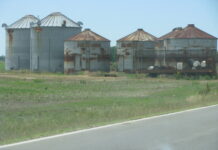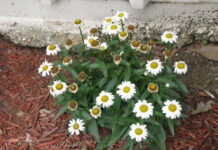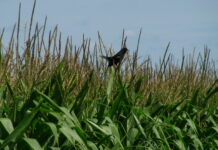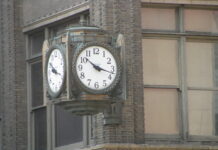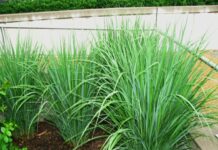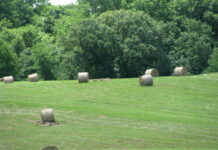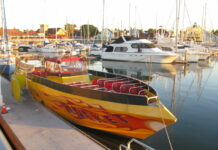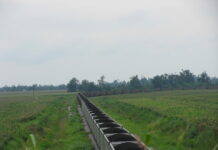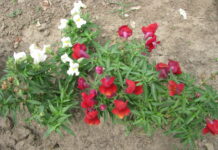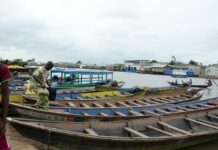Photo credit: DiasporaEngager (www.DiasporaEngager.com).
The area used to grow lilies also increased by nearly 28 percent. The increase in the area used to grow tulips and lilies seems to have dominated other popular bulb varieties such as narcissi (-11 percent) and gladioli (-33 percent).
| 2013 | 11.350 | 4.887 | 1.761 | 1.434 | 1.111 | 0.425 | 2.072 |
|---|---|---|---|---|---|---|---|
| 2014 | 11.440 | 5.215 | 1.684 | 1.482 | 1.005 | 0.395 | 2.123 |
| 2015 | 12.156 | 5.838 | 1.681 | 1.484 | 0.935 | 0.351 | 2.119 |
| 2016 | 13.202 | 6.065 | 1.593 | 1.464 | 0.929 | 0.325 | 2.201 |
| 2017 | 13.408 | 6.435 | 1.487 | 1.419 | 0.985 | 0.328 | 2.381 |
| 2018 | 14.243 | 6.424 | 1.471 | 1.353 | 1.007 | 0.340 | 2.507 |
| 2019 | 14.354 | 6.021 | 1.440 | 1.394 | 0.834 | 0.358 | 2.633 |
| 2020 | 14.897 | 5.284 | 1.522 | 1.425 | 0.812 | 0.317 | 2.589 |
| 2021 | 14.446 | 5.812 | 1.481 | 1.453 | 0.895 | 0.392 | 2.622 |
| 2022 | 14.817 | 6.251 | 1.471 | 1.428 | 0.854 | 0.416 | 2.649 |
| 2023 | 15.017 | 6.257 | 1.559 | 1.292 | 0.744 | 0.407 | 2.834 |
Slightly more farms are engaged in bulb cultivation
The total number of farms active in flower bulb cultivation has increased by 7 percent to 1,639 in the previous ten years, representing a 108-percent increase on 2013. This includes farms that grow flower bulbs as a secondary activity alongside other agricultural activities, as well as farms that grow flower bulbs as their main activity. Until 2013, the number of cultivaters was still declining steadily.
The majority (55 percent) of flower bulb farms are active in growing tulips. Along with lilies (25 percent) and narcissi (12 percent), these are the types of bulbs that most growers cultivate.
The number of growers decreased for almost all bulb crops with the exception of tulips and lilies, while the latter has increased by 30 percent since 2013.
Largest part of arable land at farms mainly active in growing flower bulbs
Just over a third of all farms growing flower bulbs do this as their main activity. In 2023, there were 577 farms; 12 percent fewer than ten years previously. These farms account for 61 percent of the total flower bulb cultivation area.
Nearly a quarter of all bulb-growing farms are crop combination farms that grow various crops. The number of these farms that also grow bulbs has more than doubled relative to 2013. Collectively, they accounted for 12 percent of the total bulb cultivation area.
In 2023, 14 percent of bulb-growing farms were classified as other horticulture farms. The number of other horticultural farms growing bulbs as a secondary activity fell by nearly 21 percent relative to 10 years previously. These farms accounted for 12 percent of the total bulb cultivation area in use.
| 2013 | 15.60 | 3.16 | 1.51 | 1.38 | 0.58 | 0.71 | 0.33 |
|---|---|---|---|---|---|---|---|
| 2014 | 15.33 | 3.23 | 1.55 | 1.77 | 0.62 | 0.66 | 0.43 |
| 2015 | 15.65 | 3.39 | 2.14 | 1.74 | 0.67 | 0.74 | 0.51 |
| 2016 | 16.00 | 4.40 | 1.92 | 1.56 | 0.79 | 0.76 | 0.62 |
| 2017 | 16.30 | 3.96 | 2.16 | 1.92 | 1.06 | 0.72 | 0.55 |
| 2018 | 16.94 | 3.84 | 2.50 | 1.87 | 1.09 | 0.69 | 0.64 |
| 2019 | 16.76 | 3.84 | 2.57 | 1.91 | 0.88 | 0.63 | 0.62 |
| 2020 | 16.52 | 4.23 | 2.40 | 1.77 | 0.89 | 0.54 | 0.65 |
| 2021 | 16.30 | 4.12 | 2.84 | 2.02 | 0.74 | 0.64 | 0.59 |
| 2022 | 16.66 | 4.27 | 3.08 | 1.81 | 0.90 | 0.66 | 0.66 |
| 2023 | 17.03 | 3.32 | 3.32 | 2.01 | 0.98 | 0.81 | 0.64 |
Exports of flower bulbs rises to more than one billion euros
In 2022, over one billion euros of flower bulbs were exported, nearly 30 percent more than in 2021. The total volume of flower bulbs exported that year was nearly 7 billion.
Tulip exports in particular increased compared with five years earlier, while export value increased by 44 percent to 320 million euros. Simultaneously, the volume of tulip bulbs crossing the border increased by 16 percent.
The export value of narcissi also rose (by 32 percent). However, the export volume of this bulb variety fell. Both the export value and export quantity of gladioli were down in 2022 compared with 2017.
| 2022** | 320 | 49 | 33 | 32 |
|---|---|---|---|---|
| 2017 | 222 | 37 | 34 | 30 |
| **more provisional figures | ||||
Source of original article: Statistics Netherlands (CBS) (www.cbs.nl).
The content of this article does not necessarily reflect the views or opinion of Global Diaspora News (www.GlobalDiasporaNews.com).
To submit your press release: (https://www.GlobalDiasporaNews.com/pr).
To advertise on Global Diaspora News: (www.GlobalDiasporaNews.com/ads).
Sign up to Global Diaspora News newsletter (https://www.GlobalDiasporaNews.com/newsletter/) to start receiving updates and opportunities directly in your email inbox for free.



